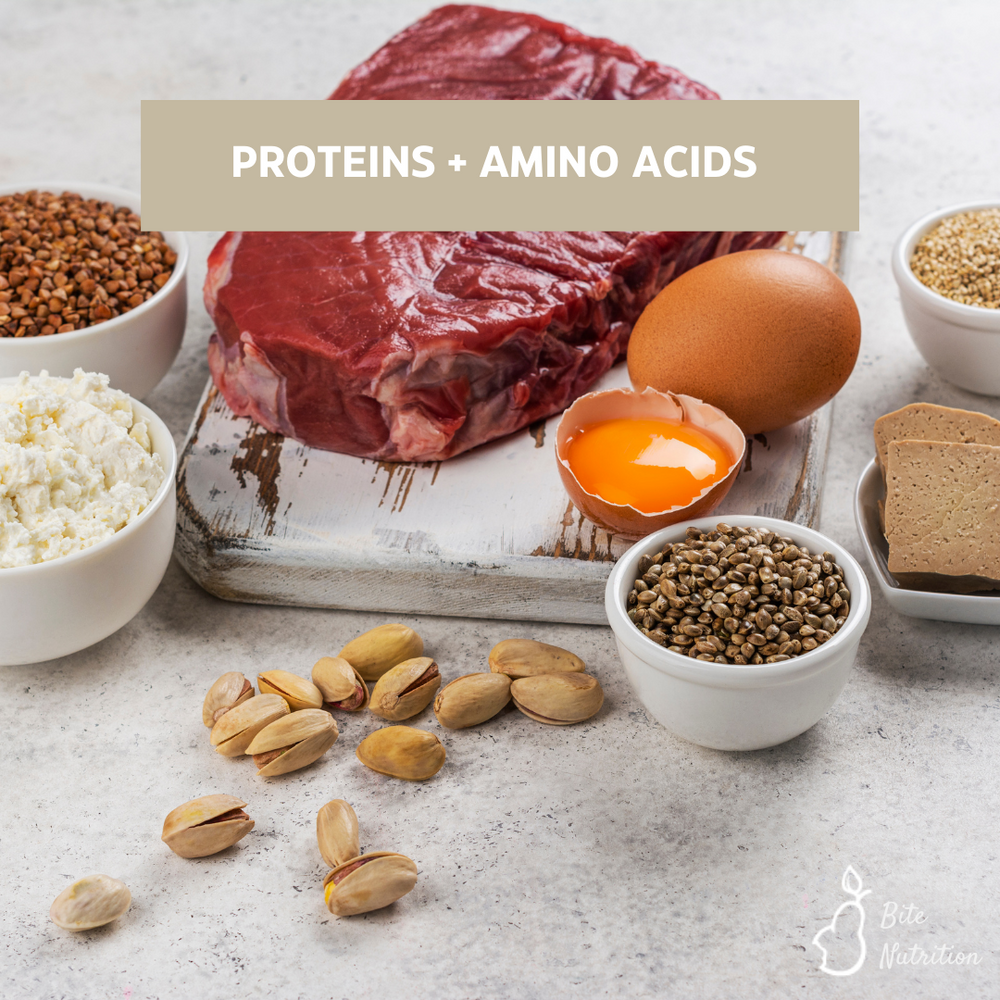Proteins and Amino Acids - Building Blocks of Life

The building blocks of your body, proteins are essential always but especially for growing bodies.
When proteins are digested or broken down, amino acids are the result. The human body then uses amino acids to make proteins to help the body:
- Break down food
- Grow
- Repair body tissue
- Perform many other body functions
Amino acids can also be used as a source of energy by the body if required.
They are classified into 3 groups
- Essential amino acids
- Nonessential amino acids
- Conditionally essential amino acids
ESSENTIAL AMINO ACIDS
- Essential amino acids cannot be made by the body. As a result, they must come from food.
- The 9 essential amino acids are: histidine, isoleucine, leucine, lysine, methionine, phenylalanine, threonine, tryptophan, and valine.
NONESSENTIAL AMINO ACIDS
Nonessential means that our bodies can produce the amino acid, even if we do not get it from the food we eat. Nonessential amino acids include: alanine, arginine, asparagine, aspartic acid, cysteine, glutamic acid, glutamine, glycine, proline, serine, and tyrosine.
CONDITIONALLY ESSENTIAL AMINO ACIDS
- Conditionally essential amino acids are usually not essential, except in times of illness and stress.
- Conditionally essential amino acids include: arginine, cysteine, glutamine, tyrosine, glycine, proline, and serine.
Protein Sources
The richest sources of protein in a way our bodies can consume it easier, which is what we refer to as “high bioavailability” (HBV), is through animal flesh or products. Proteins are made up of amino acids and the amino acid combinations in animal products are complete proteins.
Plant sources of protein do not contain all the essential amino acids that the body requires to create, repair and work in a healthy way, so you need to ensure you get all the correct complimentary foods in over a day to achieve the same results as you would with animal flesh. If you have decided to give your child a diet with no animal flesh and/or products, please see a dietitian so you can learn more about complimentary amino acids and ensure your child’s diet has enough complete protein to have them grow and develop in a healthy way.
You do not need to eat essential and nonessential amino acids at every meal, but getting a balance of them over the whole day is important. A diet based on a single plant item will not be adequate, but we no longer worry about pairing proteins (such as beans with rice) at a single meal. We just look at the complete day.
Meat, poultry, fish, eggs, tofu, nuts, seeds, legumes and beans are all foods that are high in protein. So, make sure your baby and child get these foods every day. Specifically red meat 3-4 times per week for minerals such as iron, fish 2-3 times per week for the additional benefit of omega fats are important protein sources that should be included weekly. You can read this guide for more information of serve sizes and foods.
Remember if you have any concerns about your child or loved ones getting enough quality protein in their diet, always consult with a qualified health professional.

